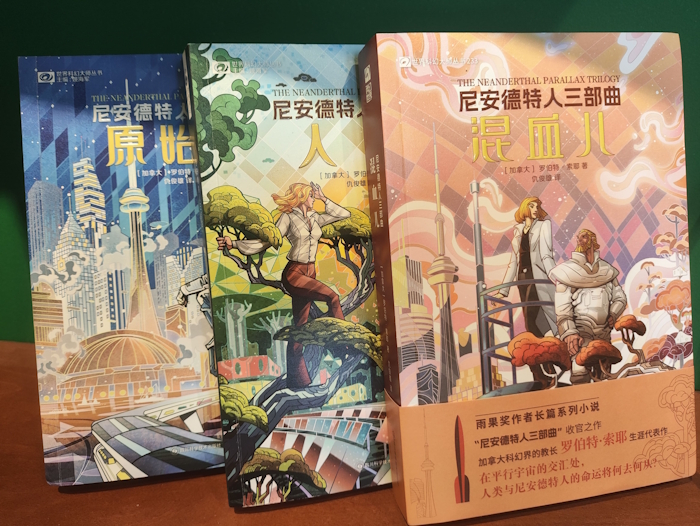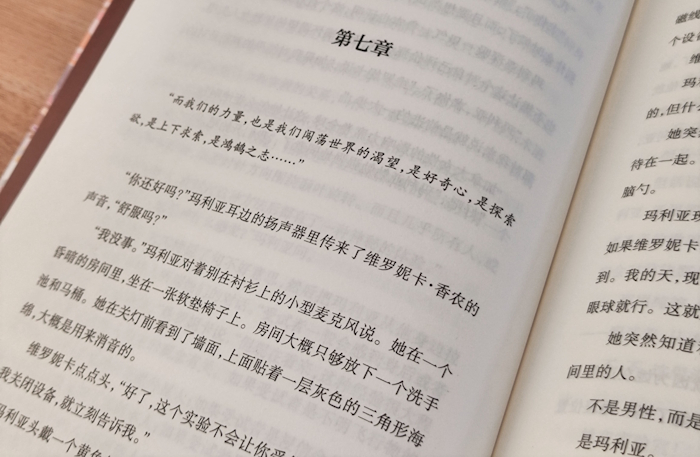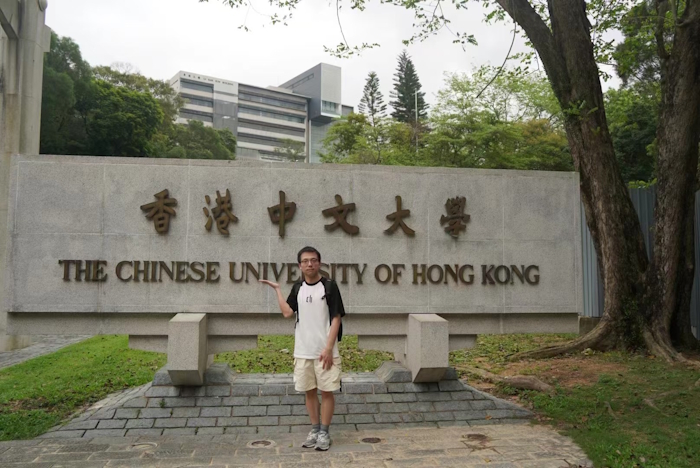News and Events
Bringing the Neanderthals to Life: Reflections on Translating Robert J. Sawyer's Neanderthal Trilogy
| Introduction to the New Book |
| The final book of The Neanderthal Parallax trilogy, titled Hybrids, translated by Qiu Junxiong, a Master’s graduate at our department, has been published by Sichuan Publishing House of Science & Technology. This book, written by one of Canada’s most influential science fiction writers, Robert J. Sawyer, follows the first two books, Hominids and Humans. Notably, the first book, Hominids, won the 2003 Hugo Award for Best Novel. |
| The series imagines a parallel world where Neanderthals, instead of Homo sapiens (that is, us), became the dominant intelligent hominids. In this alternate universe, they developed a completely different form of technology and social structure from human beings. However, an accident caused our protagonist, Neanderthal physicist Ponter, to cross over from his world into ours and meet geneticist Mary, our female protagonist. Eventually, Neanderthal scientists established a portal connecting two worlds. After numerous events and confrontations with the darker aspects of human nature, Ponter and Mary forge a relationship as they strive for mutual benefit between their peoples and have their “hybrid” baby. |
| Translator’s Reflections |
| One of the main challenges I faced when translating this trilogy was creating Chinese equivalents for the terms coined by Sawyer. For example, Voyeur (a device in the Neanderthal world akin to television), Exhibitionists (a role similar to journalists in the Neanderthal world), as well as the unique Neanderthal calendar and festivals such as Two Would Next Become One and Last Five. These terms needed to strike a delicate balance: they should evoke a sense of unfamiliarity at first glance, allow readers to infer their meaning as English readers would, and still feel like commonplace words fit for everyday use. |
| Additionally, since the first book in the series was serialized in a magazine and the subsequent two were published as standalone novels after the first gained recognition, the latter two often contained lengthy recaps of prior events—redundant for Chinese readers. After discussing with the editor, I significantly condensed these recaps to ensure a smoother reading experience. I also removed many repetitive phrases to tighten the overall structure, adjusted the dialogue to make it more conversational, and preserved the original meaning. |
| Before translating The Neanderthal Parallax trilogy, I had already published three full-length novels, but this project made me seriously reflect on a recurring issue: what a translator can do when translating a novel. Many translators hesitate to cut or modify the source text, which often results in the dreaded “translationese.” For literary translators, accuracy is the foundation, but beyond that, the real challenge lies in capturing the style and tone of the author and the text—whether it is pacy and breezy or rhetorical and complex. |
| For popular literature, the translated text must be engaging, smooth, and worthy of being called a “page-turner.” Translators should become path-clearers: straightening the winding road for readers, removing obstacles that hinder comprehension, while preserving the scenery along the way—so that readers can take the “car of reading” and race forward at full speed. |
 |
 |
 |
 |


